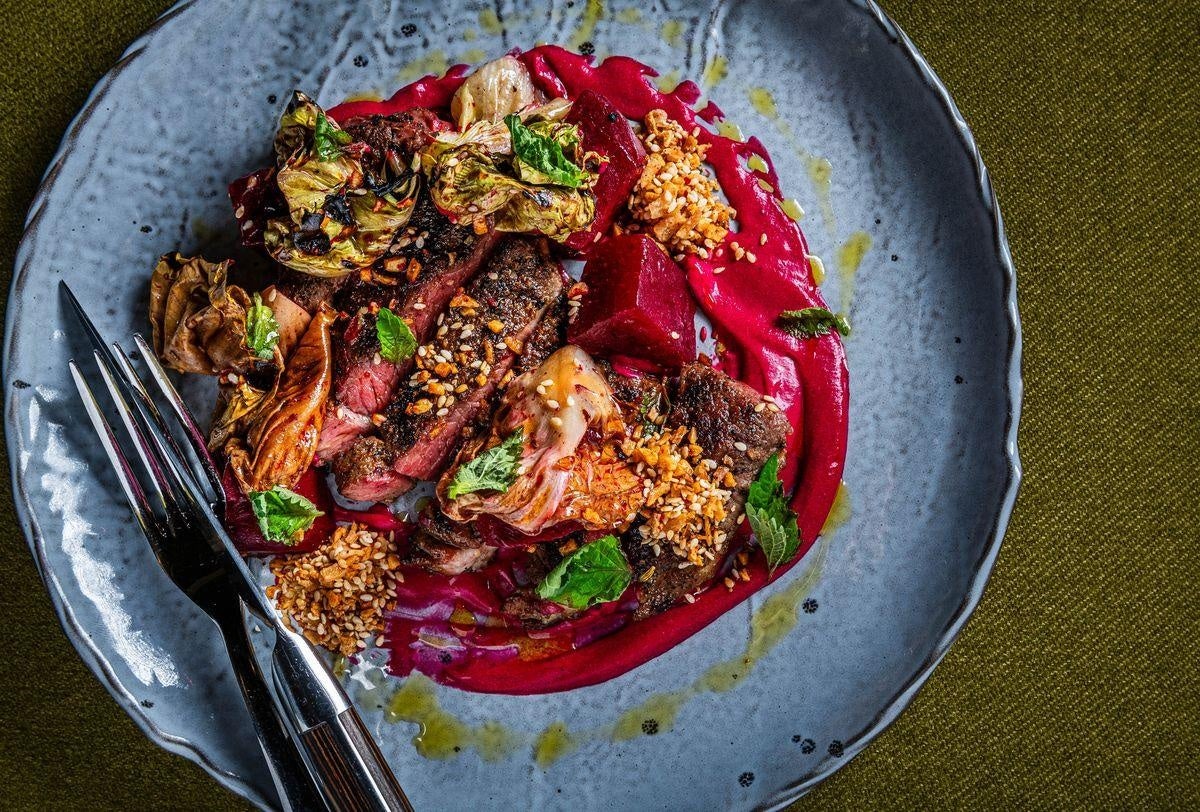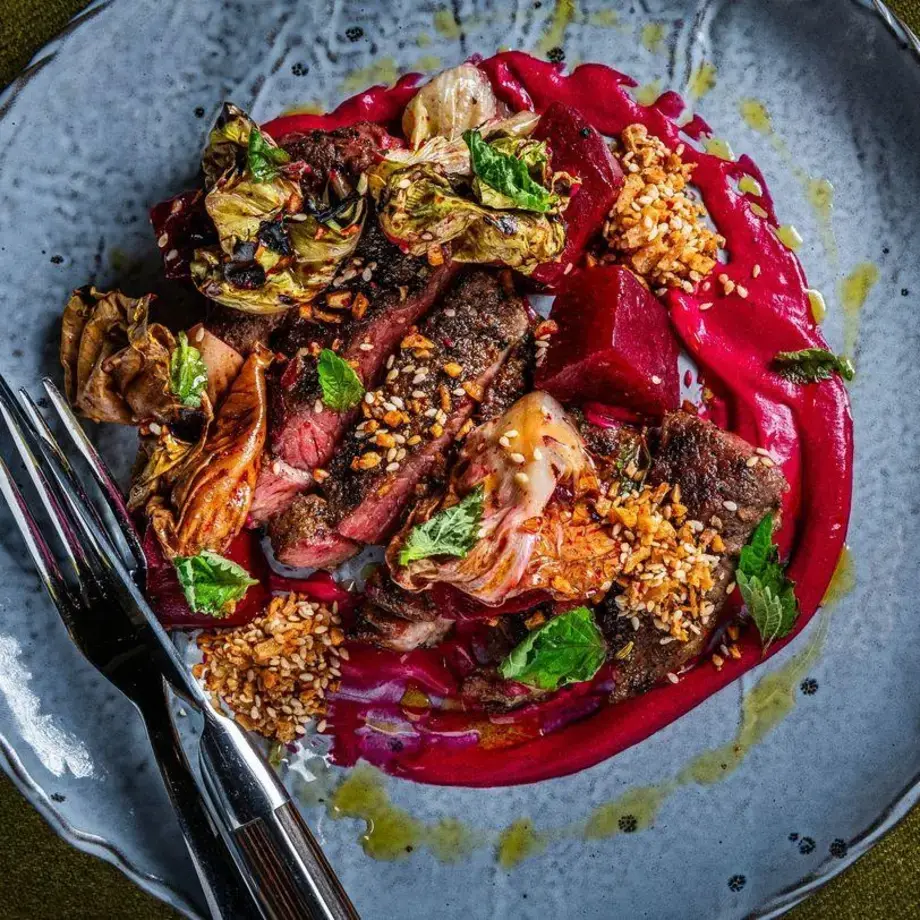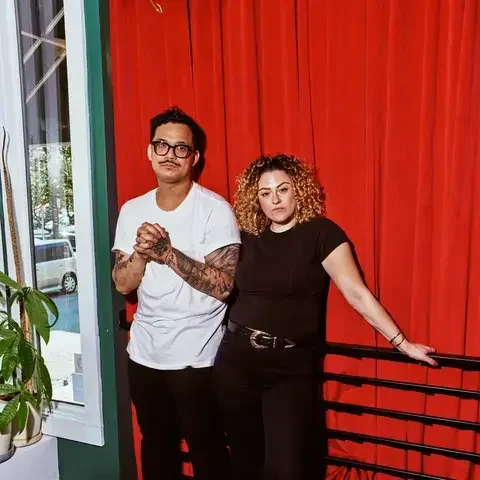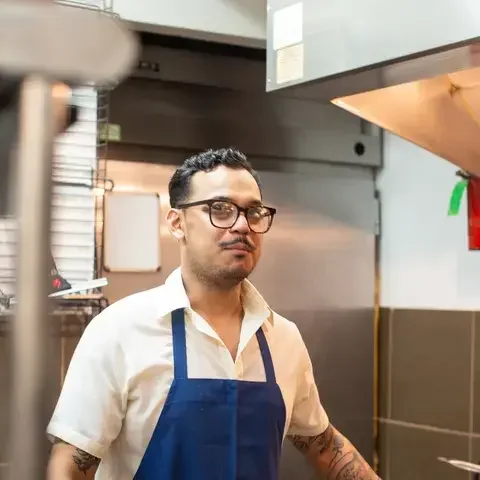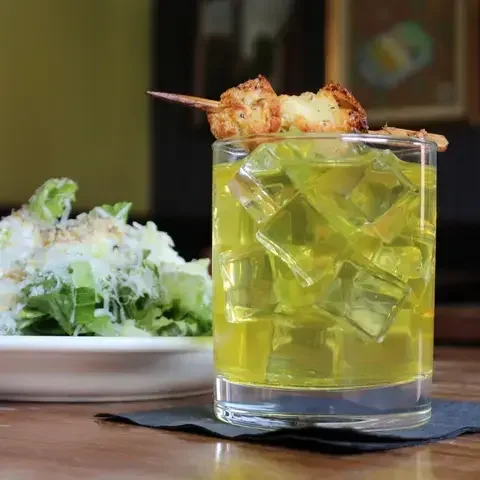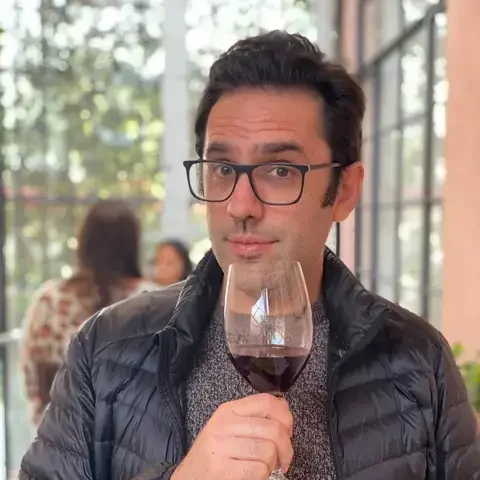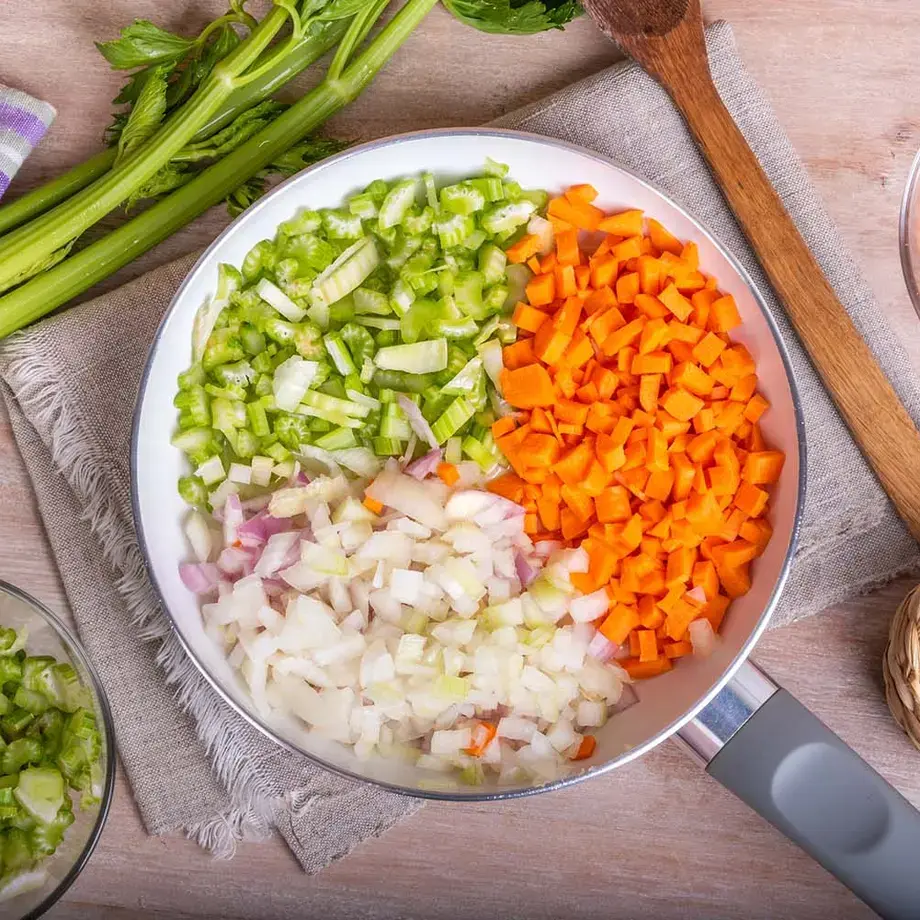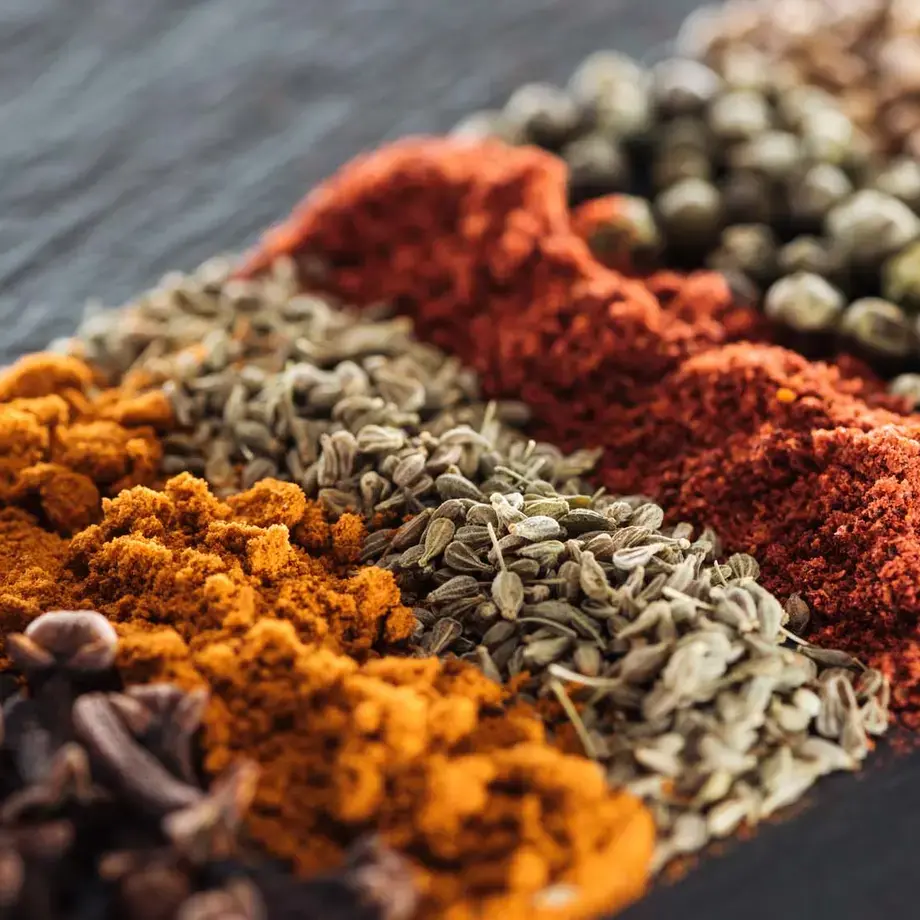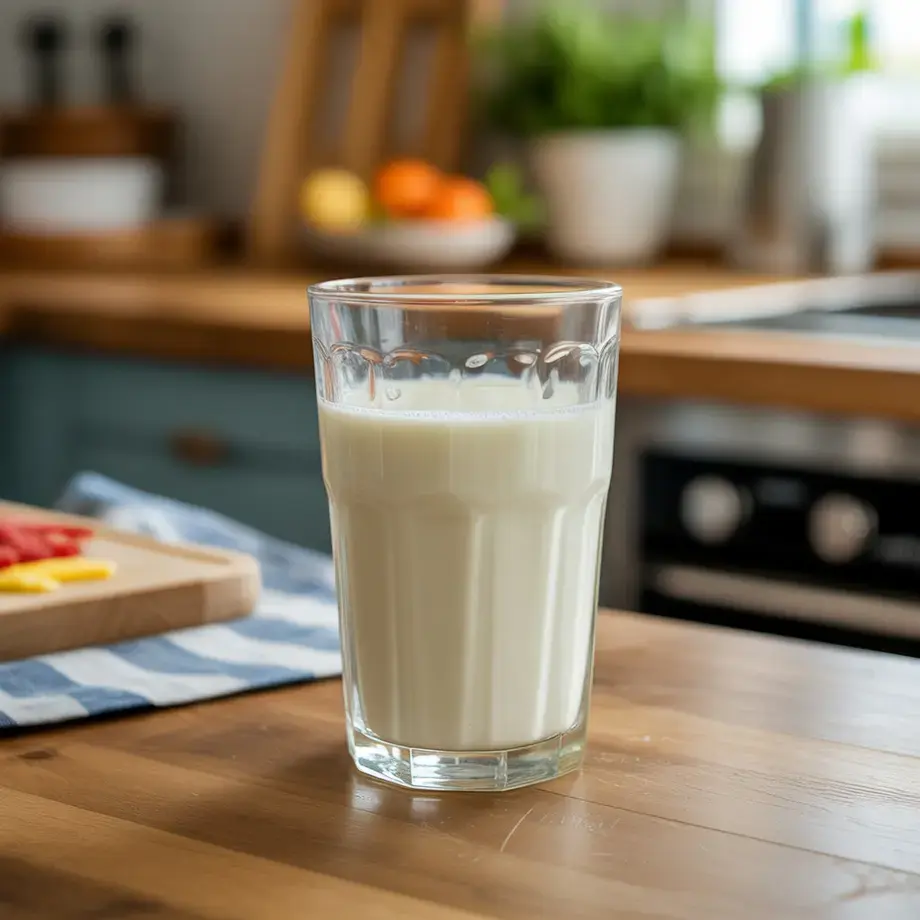In the last seven years or so, koji—like garum—has wormed its way out from the confines of Japanese cuisine, worked its way into the fermentation repertoires of New Nordic kitchens, and become, in fine dining spaces that emphasize scratch cooking, almost commonplace.
Applied to starch mediums—from rice to soybeans to farro, bread, and black-eyed peas—koji transforms these ingredients into shoyus and misos that are worlds apart from those of Japan, preserving, deepening, and encapsulating the terroir of far-flung places.
Over the last year, I made bread miso in Tucson with koji, stuck my head inside a koji-muro outside Richmond, and poked around prep spaces in kitchens across North America that use koji. I spoke to chefs fermenting Arizonan tepary beans and rice grown in Mexico. I encountered shio koji in desserts in Philadelphia, adding brininess to martinis in Mexico City, tenderizing meat in Washington, D.C., and Honolulu, and making leche de tigre milkier—also in Mexico City.
This article has been a long time in the making.
What is Koji Mold?
But first, a primer on koji mold as a blanket term. Koji typically refers to Aspergillus oryzae, which I found to be the most commonly used strain, though there are a few other related fungi. The genus Aspergillus contains only a few strains suitable for culinary use—others can be dangerous to humans. Soybeans, rice, and barley inoculated with Aspergillus oryzae or Aspergillus sojae yield familiar Japanese fermented pantry products and alcohols like amazake and shochu. The process begins with the mold, which starts as a yellow-green dust, being applied to steamed grains and left to ferment for two to three days.
I wanted to see for myself how koji transforms soybeans into soy sauce. For that, I headed to Richmond to visit the San-J plant, where the company produces a variety of tamari and tamari-based sauces.
“Soybeans are soybeans,” shrugged both the manager and the director of plant operations simultaneously. “But koji is the star.” At San-J, koji—not soybeans—is the dominant source of flavor in both soy sauce and tamari. The spores are the only thing San-J imports from Japan to Richmond, where the climate and weather fluctuations resemble those of Japan, making it an ideal location for fermentation.
At the plant, I encountered fermentation tanks three stories tall, each holding 130,000 liters, and silos storing 100 tons of soybeans. I was allowed inside a muro the size of my Philadelphia townhouse, where lumps of soybean meal had spent a day growing fuzzy white koji. The spores had been blasted into the chamber through pipes. A wave of hot, cheesy, sake-scented air hit me in the face, burning my eyes. When I plucked one of the fuzzy soy nuggets from the pile, it tasted like cooked soybeans—funkier and far more umami-rich.
I tasted tamari at various stages: mid-fermentation, post-brine, and just before bottling. A four-month-old batch, still too young to pasteurize, had darkened from muddy beige to pitch black through a process called melanization. I also observed one of the final stages of production, in which the fermented solids are wrapped in massive cloths and pressed under extreme weight.
“Koji has the unique character of containing many enzymes that break down proteins and starches into sugar,” explained Takashi Sato, president of San-J. “This is what gives soy sauce and tamari their flavor. Many chefs also use koji to tenderize meat—it’s a middle ingredient.”


